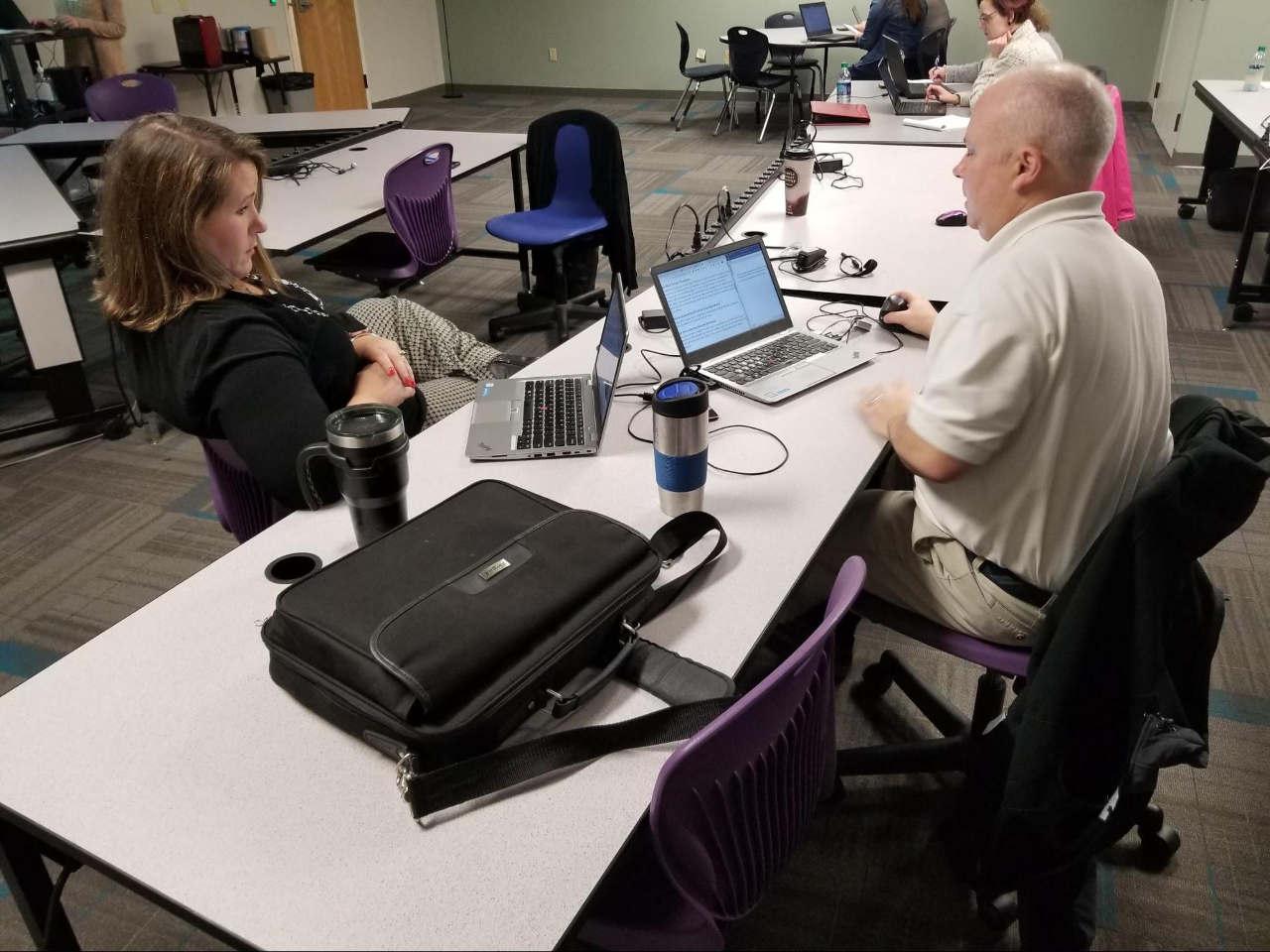Become a Technology-Savvy Administrator
Just as teachers require professional development (PD) to learn how to integrate technology into the classroom, administrators need professional development as well.

Mobile County Public School System’s Instructional Technology department works to help administrators understand the technology integration process—from participation and modeling to evaluating the effectiveness of the integration process.
As technology integration into the classroom has increased, monitoring the effectiveness of the integration process has become the major focus. Teachers are responsible for the effective integration of technology in the classroom and knowing if what they’ve chosen to integrate is having an impact on learning.
While administrators are observing the integration process, many do not understand the technology tools that are being used in the classroom. MCPSS’s Instructional Technology department offers professional development specifically designed to help administrators understand not only the technology tools being used in their schools but also how to evaluate the effectiveness of the integration process.

When is there time?
With the growing responsibilities that administrators have, it can be difficult to find the time to gain an understanding of the technology that teachers are integrating into their classrooms.
However, just as teachers require professional development (PD) to learn how to integrate technology into the classroom, administrators need professional development as well. The MCPSS Instructional Technology department offers this training in three sessions, which gives the administrators time in between sessions to begin to apply what they’re learning and to formulate questions, before the following session, on what they experienced at their school.
How does this work?
Tools and ideas to transform education. Sign up below.
The Instructional Technology department developed a Professional Learning Unit (PLU) for administrators as a means of helping administrators and prospective administrators better understand the technology integration that’s taking place in their schools. This PLU consists of an introduction to technology apps and programs that the department had previously trained teachers to integrate into their classrooms.
Administrators and prospective administrators participate in professional development one day per month for three months. In between each session, they survey their schools on what they’ve learned. Each of the three training sessions for administrators focuses on several technology tools that are being used in many of the schools in the district. The administrators have the opportunity to see each tool in action, participate in an activity that involves them using the tool, and then document times they’ve seen that particular tool being used in a classroom or what they feel effective use of that tool should look like in their school.
One administrator who participated in the professional development sessions said that this training method was “extremely informative, and I gained knowledge of apps that I was not previously aware of. Thank you so much for all that you have done to help us!” This administrator expressed that his lack of awareness of these technology tools had previously prevented him from evaluating effectively the teachers’ technology integration process.
Administrators participating in this PD also have job-embedded tasks to complete when they return to their schools so that they can put what they learned in their sessions into action. When they’ve completed the training, administrators will have submitted several artifacts showing what they’ve learned and how they’ll use what they’ve learned in their schools.

Evaluating Effectiveness
As part of the third training session, administrators learn about tools they can use to evaluate the effectiveness of the technology integration taking place in their school. They also have an opportunity to share best practices with other administrators from the time they’ve spent in classrooms observing technology use and evaluating its effectiveness. Administrators are introduced to what effective integration consists of, or “look-fors” in the classroom, to help them determine whether or not what they’re observing is effective integration. Last but not least, part of the evaluation process includes sharing with teachers what they’ve observed in the classroom and offering support in the form of technology PD that’s led by the administrator as a way to model what they’ve learned.
Several administrators have participated in this PLU, and they’ve expressed their excitement and appreciation for the information they’ve received and for all that they’ve learned. One administrator commented, “I am very appreciative of the implementation of this PLU. I have become more technologically savvy and now seek new ways to use technology in my school.” Another administrator added, “This was actually fun and engaging and I walked away with something tangible that I feel will genuinely help our teachers.”
This PLU has helped to bring administrators and teachers together in their efforts to integrate technology into their schools effectively. As a result, technology tools will have a greater impact on student learning.
Dr. Ursula Martin is a district-level Instructional Technology Resource Teacher for Mobile County Public School System in Mobile, Alabama.
